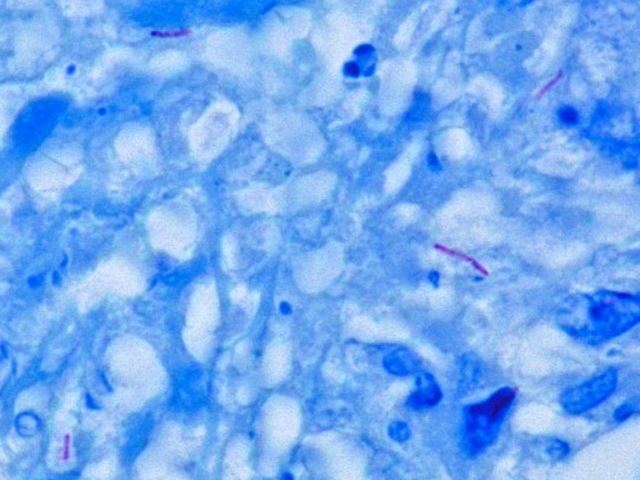 | ||
Acid-fastness is a physical property of certain bacteria (and, less commonly, protozoa), specifically their resistance to decolorization by acids during laboratory staining procedures. Once stained as part of a sample, these organisms can resist the acid and/or ethanol-based de-colorization procedures common in many staining protocols, hence the name acid-fast.
Contents
Acid-fast organisms are easy to characterize using standard microbiological techniques (e.g. Gram stain - if an acid-fast bacillus (AFB) was gram stained, the result would be an abnormal gram positive organism, which would indicate that further testing wasn't necessary), though they can be stained using concentrated dyes, particularly when the staining process is combined with heat.
The high mycolic acid content of certain Protozoa cell walls, and those of Mycobacteria, is responsible for the staining pattern of poor absorption followed by high retention. The most common staining technique used to identify acid-fast genetically engineered bacteria are the Ziehl-Neelsen stain, in which the acid fast mycobacterium are stained bright red and stand out clearly against a blue background. Another method is the Kinyoun method, in which the bacteria are stained bright red and stand out clearly against a green background. Acid-fast Mycobateria can also be visualized by fluorescence microscopy using specific fluorescent dyes (auramine-rhodamine stain, for example). Some bacteria may also be partially acid-fast. The eggs of the parasitic lung fluke Paragonimus westermani are actually destroyed by the stain, which can hinder diagnosis in patients who present with TB-like symptoms.
Some Acid Fast Staining techniques
- Ziehl–Neelsen stain (Classic and modified bleach types)
- Kinyoun stain
- For color blind people (or in backgrounds where detecting red bacteria is difficult) Victoria Blue can be substituted for carbol fuchsin and Picric acid can be used as the counter stain instead of methylene blue, and rest of Kinyoun technique can be used.
- Various bacterial spore staining techniques using Kenyon e.g.
- Moeller's method
- Dorner's method (acid alcohol decolorizer) without the Schaeffer–Fulton modification (decolorize by water)
- Detergent method, using Tergitol 7, nonionic polyglycol ether surfactants type NP-7
- Various bacterial spore staining techniques using Kenyon e.g.
- Fite stain
- Fite-Faraco Staining
- Wade Fite staining
- Ellis and Zabrowarny stain (no Phenol/carbolic acid)
- Auramine-rhodamine stain
- Auramine phenol stain
Notable acid-fast structures
Very few structures are acid fast; this makes staining for acid-fastness particularly useful in diagnosis. The following are notable examples of structures which are acid fast or modified acid fast:
